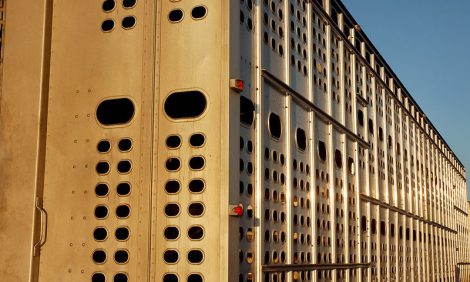



Check Alfalfa Hay for Fibre Digestibility
An interesting forage year in the US may mean certain dairies will need to check their hay for digestibility, according to latest expert advice.MidWest dairy farms have had some unusual forage production conditions this year, with cool, wet springs.
This means scrutiny is required as to feed quality, write forage agronomists Dr Dan Undersander, University of Wisconsin and North Dakota State's Marisol Berti.
What Do You Look For?
The cool, wet weather this past spring is causing some unusual situations for forage quality in the Midwest. Forage quality is estimated through two indicators – relative feed value (RFV) and relative forage quality (RFQ) – and both are used for hay marketing decisions. RFV combines intake and nutritive value into one number, based on acid detergent Fibre (ADF) and neutral detergent Fibre (NDF). Its calculation does not include Fibre digestibility.
What This Means
The RFQ includes neutral detergent Fibre digestibility (NDFD). Generally, as the season advances, the NDFD value decreases (Figure 1). The NDFD value allows for the estimation of the total digestible nutrients (TDN) in the forage, which is a much more accurate estimate of forage quality because it includes nonFibre carbohydrates, crude protein, fatty acids and the digestible portion of NDF. The relationship between constituents and RFV and RFQ in alfalfa hay are shown in Table 1.
Weather Patterns of 2014
Generally, first-cutting alfalfa is higher in NDFD than other cuttings (Figure 1); thus, RFQ is usually greater than RFV. However, this year, this was not necessarily true.
Farmers should have first-cutting alfalfa analyzed for Fibre digestibility in addition to the usual Fibre (NDF and ADF) and CP analysis. This year, we sometimes saw RFQ 40 to 50 points lower than RFV (RFQ is generally higher than RFV for first cutting). This was likely due to a number of situations:
- This spring was unusually cool, so alfalfa put out fewer leaves than normal. Because leaves are lower in fi ber and higher in fi ber digestibility than stems, reduced leaf content results in higher fi ber but less digestibility. Because RFQ is weighted for digestible Fibre (RFV is not), fewer leaves lowers RFQ more than RFV.
- We also had an unusually wet spring. The combination of cool, wet weather will increase leaf diseases. As leaf drop occurs, the leaf/stem ratio of the hay is decreased and, again, RFQ would be decreased for the reasons stated above.
- The wet conditions also meant many samples had unusually high dirt contamination (dirt is largely indigestible silica). More dirt on the hay or haylage means elevated ash content; higher ash means reduced TDN because each 1 percent of ash is 0.98 unit less of TDN. Because RFV includes the ash (RFQ does not), elevated ash levels cause RFQ to be lower than RFV. This season, we saw a number of samples with 15 to 16 percent ash.
In conclusion, due to this year’s unusual weather, any forage sample with RFQ lower than RFV should be reviewed carefully and balanced in the ration.




